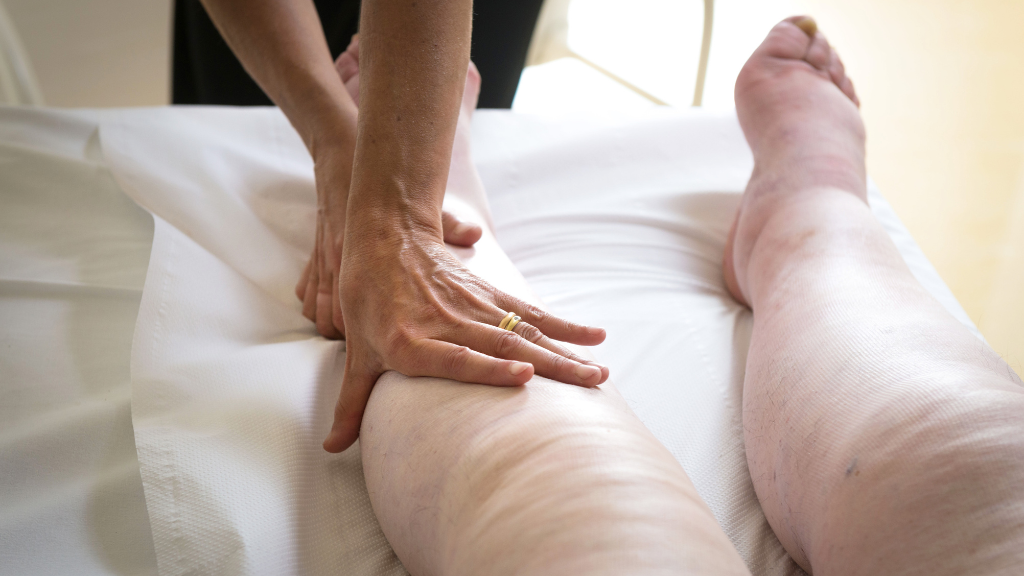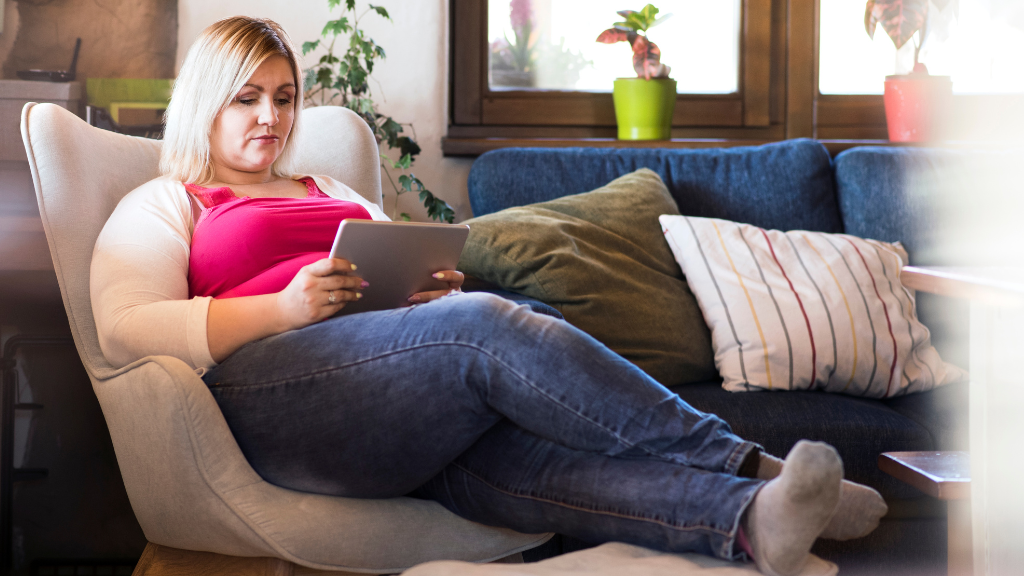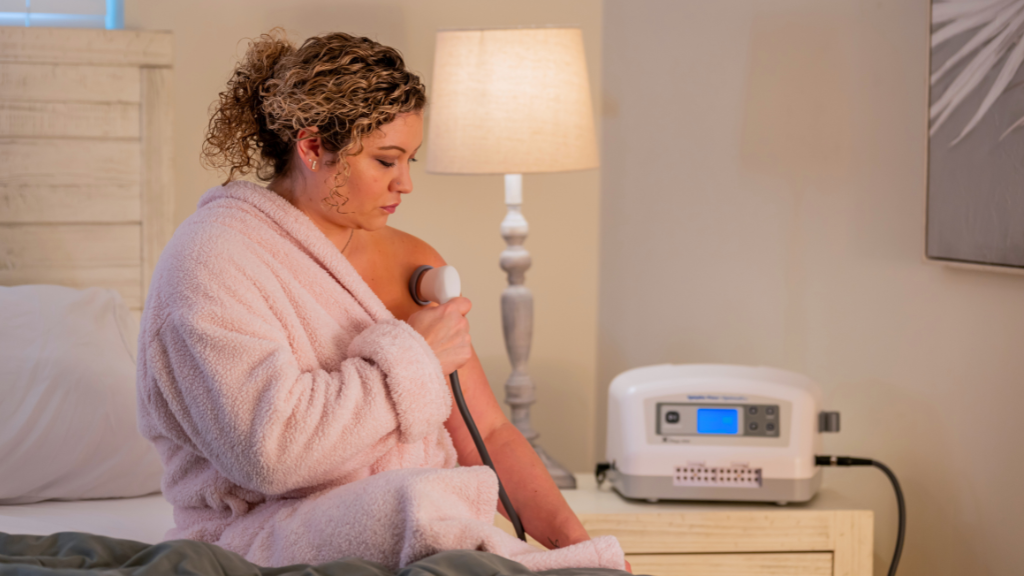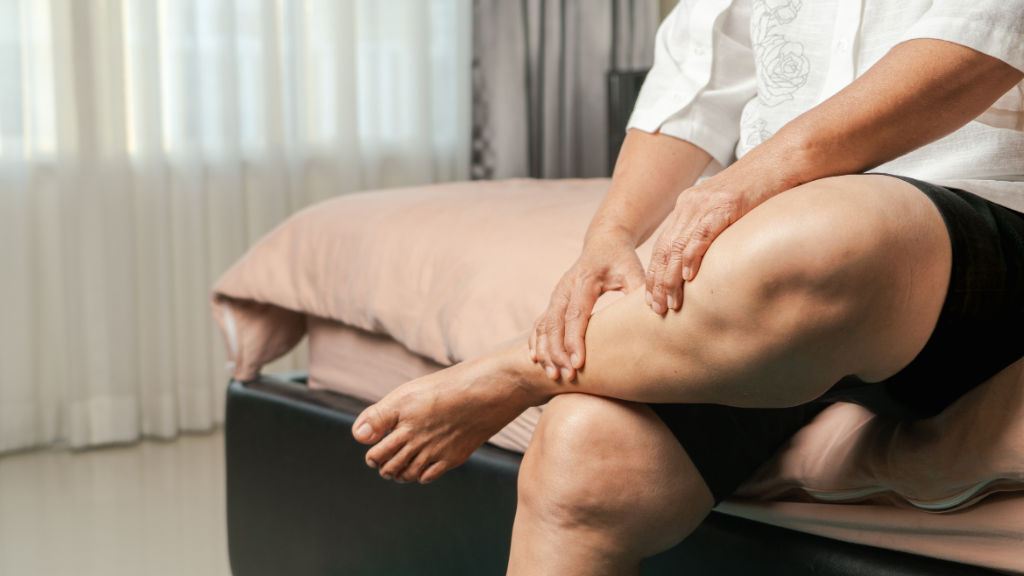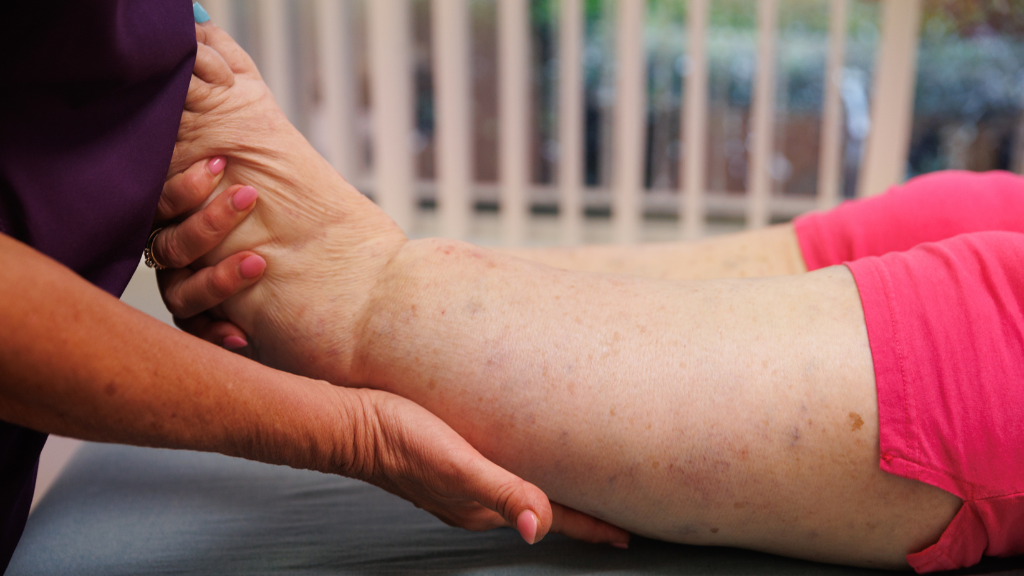Public speaker, podcaster, and CEO Lisa Duerre is an advocate for increasing awareness of lymphedema and lipedema. Her symptoms started in her teens, though she didn’t receive the correct diagnosis until she was 53.
“Lipedema, especially, goes undiagnosed for decades,” she says. “It’s often misdiagnosed as obesity or just excess weight, which is what happened to me. However, research has shown that lipedema is resistant to calorie restriction and exercise.”
Lipedema caused changes in her body that eventually led to lymphedema. She’s learned many ways to cope with lipedema and lymphedema – and says she couldn’t have done it alone.
About Lymphedema and Lipedema
If you want to help someone with lymphedema or lipedema, it helps to know the basics of these conditions:
- Lymphedema is chronic swelling caused by damage to or impairment of the lymphatic system.
- Lipedema causes painful and disfiguring fat deposits. The torso may look proportional, while the legs, buttocks, or arms may be much larger.
- Lipedema affects the body bilaterally and symmetrically, while lymphedema is often unilateral and may appear symmetrical or asymmetrical.
- Lymphedema and lipedema can have similar symptoms, such as swelling in the arms and legs.
- Lymphedema and lipedema can range from mild to debilitating.
- There is no cure for either of these conditions, although compression therapy and other treatments can help manage symptoms.
- Lipedema mainly affects women and usually presents or gets worse during times of hormonal changes such as puberty, pregnancy, perimenopause, or gynecological surgery.
Duerre has lipolymphedema, which is when lipedema progresses and causes lymphedema. At Stage III, an advanced stage, she experiences significant swelling and chronic pain in her legs and upper arms. The symptoms affect her quality of life and ease of movement.
“People in earlier stages don’t have the extent of symptoms I do,” she says. “It’s severely impacted my ability to walk or stand for a period without experiencing pain. There are days when even waiting in a line is a challenge, much less walking.”
Supporting Someone with Lymphedema or Lipedema
The support of Duerre’s family and others with lipedema and lymphedema helped her cope after her diagnosis and find her way back to a vibrant, fulfilling life. Support and connection are critical for managing the disease, she says.
“Getting these diagnoses can be very scary because there’s no cure,” says Duerre. “Lymphedema and lipedema impact every aspect of my life: physical, emotional, social, and financial. The diagnosis also impacts my family – I couldn’t do this without support.”
It takes time for you and your loved one to adjust to the diagnosis, create a treatment routine, and find ways of overcoming or adjusting to challenges. Duerre offers tips for supporting someone with lipedema or lymphedema.
Tip 1: Allow Emotions About the Diagnosis
“Hold space for your loved one’s emotions about their condition, especially when they’re first diagnosed,” Duerre suggests. “Let them feel what they feel.”
You can do this by:
- Allowing time to talk about emotions
- Listening with compassion
- Providing a shoulder to cry on
Tip 2: Learn About the Condition
Duerre advises taking responsibility for learning about lymphedema and lipedema rather than putting the education burden on your loved one. “Instead of asking medical or personal questions so you can learn about the condition, ask what your loved one needs right now,” she says.
“Ask how you can ease their worries and support them. Then, do your own research. There’s so much information already out there. The website Lipedema Simplified is a great lipedema resource, for example.”
Tip 3: Be Aware of Caregiver Fatigue
“Caregivers can end up having caregiver and compassion fatigue,” says Duerre. “Sometimes I see my daughter and my husband become frustrated when I ask if they can bring me my phone multiple times in the same day. Or when I ask if they will clear the dishes again because my legs hurt.”
As caregivers, you need time to rest and attend to your own needs. It’s important you:
- Create processes to know when your loved one has a pressing need
- Find ways to ease the pressure of constantly feeling on call
“We have a code word for when I need urgent help,” says Duerre. When she says the code word, it helps remind her family that she is in pain and does need assistance at that moment. “The code word has been a game changer for me and my family.”
Tip 4: Work Together by Splitting Tasks
Structuring chores and responsibilities so everyone can participate helps with caregiver fatigue, too. “We split chores, so I do the parts I’m able to do,” says Duerre. “It’s all about figuring out the best ways each person can contribute.”
For example, Duerre’s husband runs the laundry through the washer and dryer, and then she folds the clean laundry. They all help put it away.
It’s too painful for Duerre to stand in the kitchen to cook. But she puts away clean dishes since she doesn’t have to be on her feet for too long to do it.
Tip 5: Outsource What You Can
Duerre advises helping your loved one outsource as many tasks as possible. Outsourcing responsibilities takes the pressure off everyone in the household.
“There are apps for hiring people to do almost anything,” she says. “You can get a handyman to come to your house or have an online grocery order delivered. You can also outsource support by asking for it from your community, extended family, friends, and social groups.”
Tip 6: Plan for the Daily Challenges of Living with Lymphedema and Lipedema
With these conditions, it’s not just movement or standing that’s difficult, says Duerre. Daily life can present a stream of challenges, which can be exhausting.
“With lipolymphedema, I’m larger and need to plan ahead to set myself up for success,” she says. “Travel is challenging. For example, my hips don’t fit in a standard seat on an airplane, I need wheelchair assistance to get to the gate, and my legs swell when I fly. When I took my daughter to a concert, I bought two seats for myself to ensure I’d fit, and we planned for what she would do in case of an emergency.”
Tip 7: Find Support and Solutions
“It’s challenging to live with and manage these conditions, but it’s not impossible,” says Duerre. “I’m pretty upbeat, so I often ask, ‘How might I…?’ when facing a challenge.”
But she wasn’t always so positive. “In the beginning, I was depressed and overwhelmed by the diagnosis, lack of understanding, and what felt like a bleak outlook. I didn’t know how to talk about it or ask for help. I figured it out, and others can, too. Just don’t try to do it alone.”
Ask your loved one about their challenges and work together to find solutions. Encourage your loved one to join support groups or online communities for people living with these diseases, and seek out caregiver support groups for yourself.
Engage with the Lympha Press community to take part in supportive roundtable conversations, listen to podcasts, and learn about the latest therapies.
Header image of Lisa Duerre and her family by Kelly Mooney Photography and provided by Lisa Duerre.

